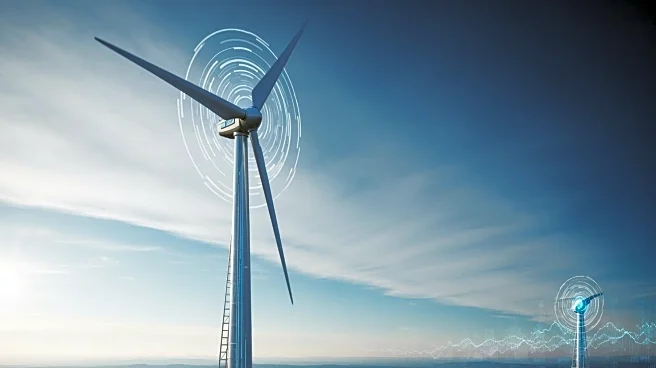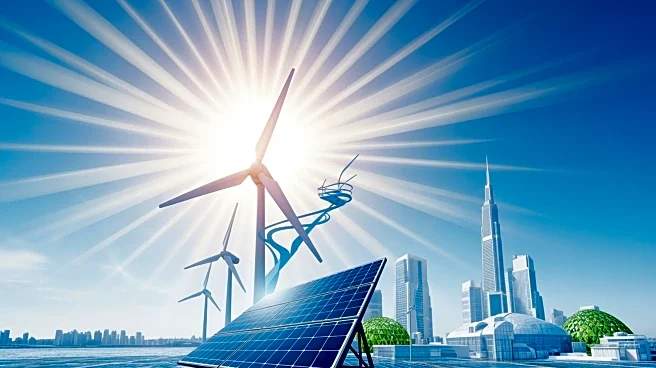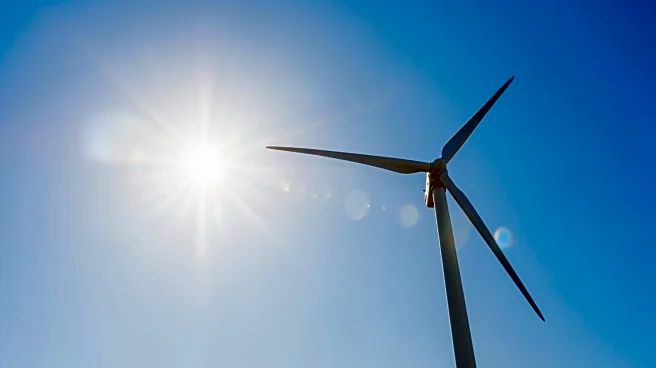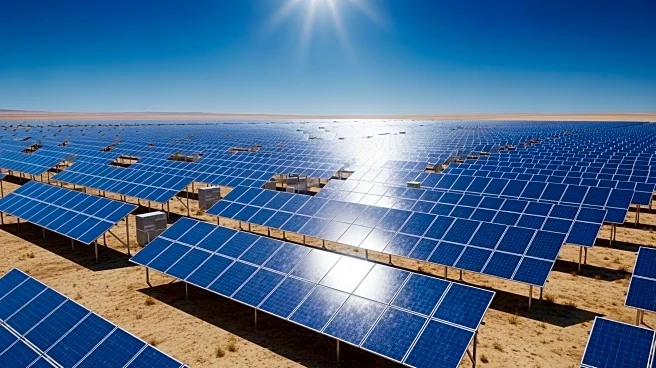What's Happening?
China has announced plans to significantly increase its wind power capacity, aiming to add at least 120 GW annually from 2026 to 2030. This target, revealed at the 2025 China Wind Power event, is more
than double the previous annual goal of 50 GW set in 2020. The new targets include at least 15 GW of offshore wind power and aim for a total installed wind power capacity of 1.3 TW by 2030 and at least 2 TW by 2035. The announcement was part of the 'Beijing Declaration on Wind Energy 2.0,' which was jointly issued by over 1,000 global wind companies. China's progress in wind power has exceeded expectations, with an average annual addition of over 60 GW from 2020 to 2024. The country has also updated its Nationally Determined Contribution, pledging to reach a combined solar and wind capacity of around 3,600 GW by 2035.
Why It's Important?
China's ambitious wind power targets highlight its commitment to renewable energy amid a global retreat from such initiatives. This move positions China as a leader in the renewable energy sector, potentially influencing global energy markets and policies. The expansion of wind power could significantly reduce China's reliance on fossil fuels, contributing to global efforts to combat climate change. The development of offshore wind and 'wind+' models, such as wind-plus-storage and wind-to-hydrogen, could drive innovation and create new economic opportunities. However, integrating such massive amounts of fluctuating power into the grid will require significant advancements in grid flexibility and renewable energy storage.
What's Next?
China's plans to expand its wind power capacity will likely lead to increased investment in renewable energy infrastructure and technology. The government is expected to accelerate renewable energy projects in desert regions and promote offshore wind power development. The integration of large-scale wind power into the grid will necessitate the modernization of power systems and the development of new power systems that coordinate power generation, grid, load, and storage. This could involve promoting greater grid flexibility and speeding up the development of renewable energy storage solutions.
Beyond the Headlines
China's wind power expansion could have broader implications for global energy dynamics. As China increases its renewable energy capacity, it may influence other countries to follow suit, potentially leading to a shift in global energy policies. The focus on renewable energy could also impact China's economic growth, as it reduces dependence on fossil fuels and fosters innovation in clean energy technologies. Additionally, the expansion of wind power may have environmental benefits, such as reducing air pollution and greenhouse gas emissions.











